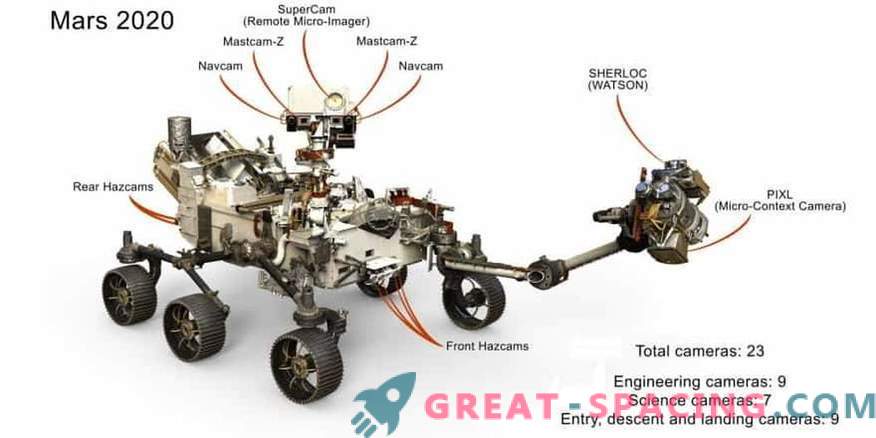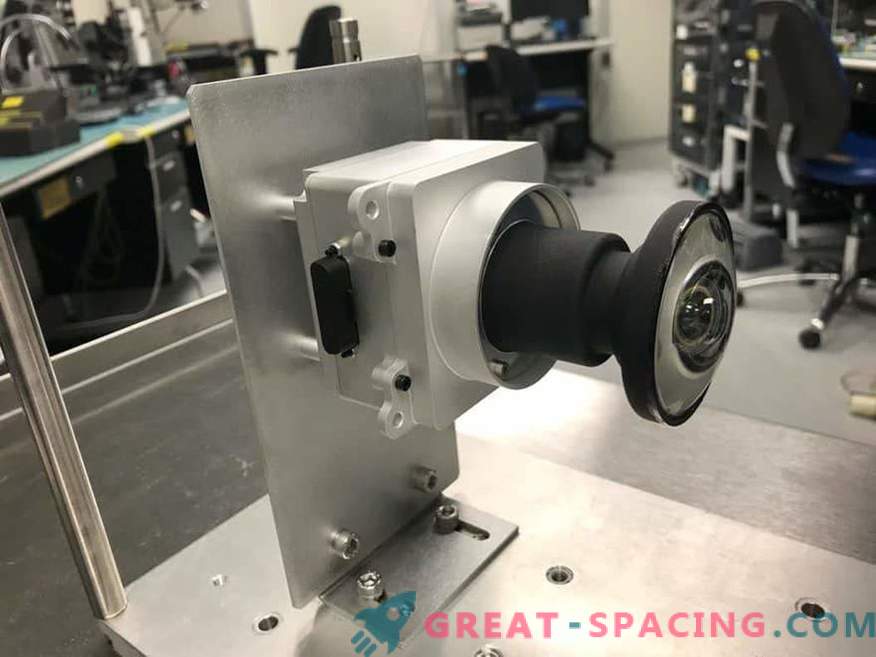
NASA 2020 Rover with 23 cameras. Many of these are advanced versions of Curiosity cameras, but there are new additions.
In 1997, Pathfinder first touched the Martian surface, having five cameras: two on the mast (out of order) and three on the rover. Since then, technology has improved, and photo sensors have become commercially available. In addition, they have decreased and are now built into each phone.
Due to this, the future rover Mars 2020 will have more “eyes” than could have been allowed before. 23 cameras contribute to the creation of wide panoramas, the study of the atmosphere and the improvement of the work of scientific instruments. Now scientists will be able to follow the dramatic descent of the rover and record the moment of opening the parachute on another planet. The camera will also be installed inside the mechanism to view the collected samples.
A set of cameras for the rover:
- Improved engineering cameras: color, higher resolution and wide view.
- Mastcam-Z is an improved Curiosity camera with a triple zoom lens.
- RMI is a remote imager with high resolution and color.
- CacheCam - observing samples inside the rover.
- Input, release and landing: 6 cameras will record the process of moving and landing the device.
- Landing Chamber - used for safe landing control.
- SkyCam - included in the group of meteorological instruments and will monitor the clouds and the atmospheric layer.
All these cameras will be used. For the creation of the device responsible technology from the Jet Propulsion Laboratory of NASA (California). The cameras have progressed in their development and space research has contributed to this. In the 1980s LRD created active pixel sensors that required less power than digital cameras. Later they moved to the commercial market.
Rover's vision

One of the improved engineering cameras with a prototype lens Hazcams, which will monitor the obstacles
Cameras will allow you to get more color and three-dimensional images. Stereoscopic cameras will be able to support 3D technology, which is ideally suited for exploring geological formations and searching for potential samples at great distances.
Add colors
The previous rovers also had cameras to track obstacles, but the black and white mode was guaranteed with 1 megapixel images. On the new device, they increased to 20-megapixel color images.
Lenses will also be able to boast a wider field of view. And this is important for the future mission, which plans to cope with the tasks in a shorter time. Previous could only stitch a few frames.
Information Transfer
But there is a problem. All updates will allow to collect more data. But this volume exceeds the amount that can be delivered to the earth receiving point. Therefore, the cameras were made smarter and allowed themselves to compress the size.
For Spirit and Opportunity rovers, this problem was solved by installing an on-board computer. But you can use other devices as repeaters. This role will play MAVEN in the first 2 years of operation of Mars 2020.











































